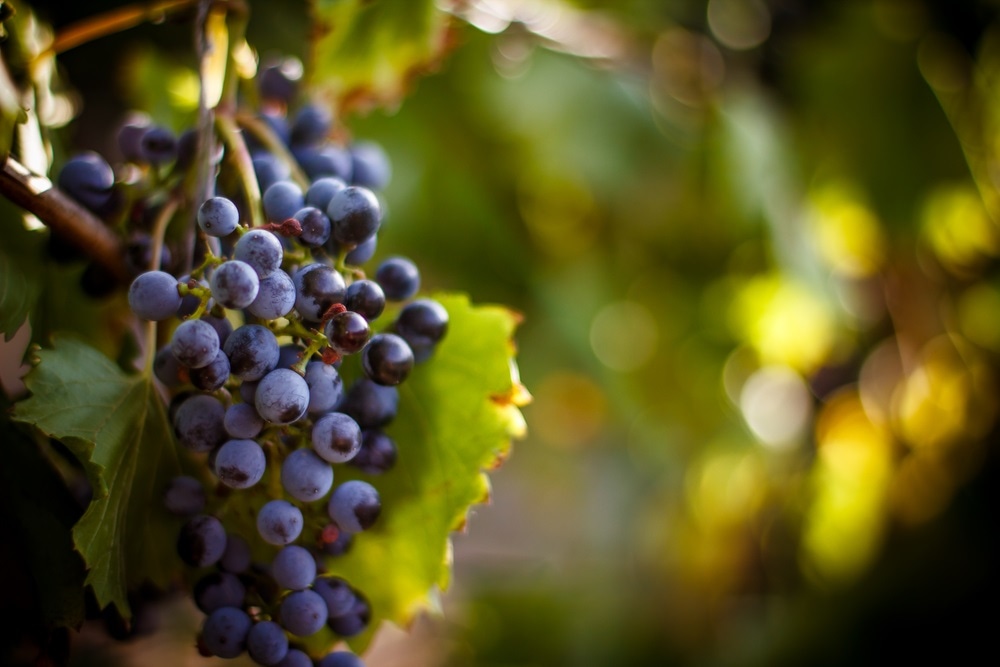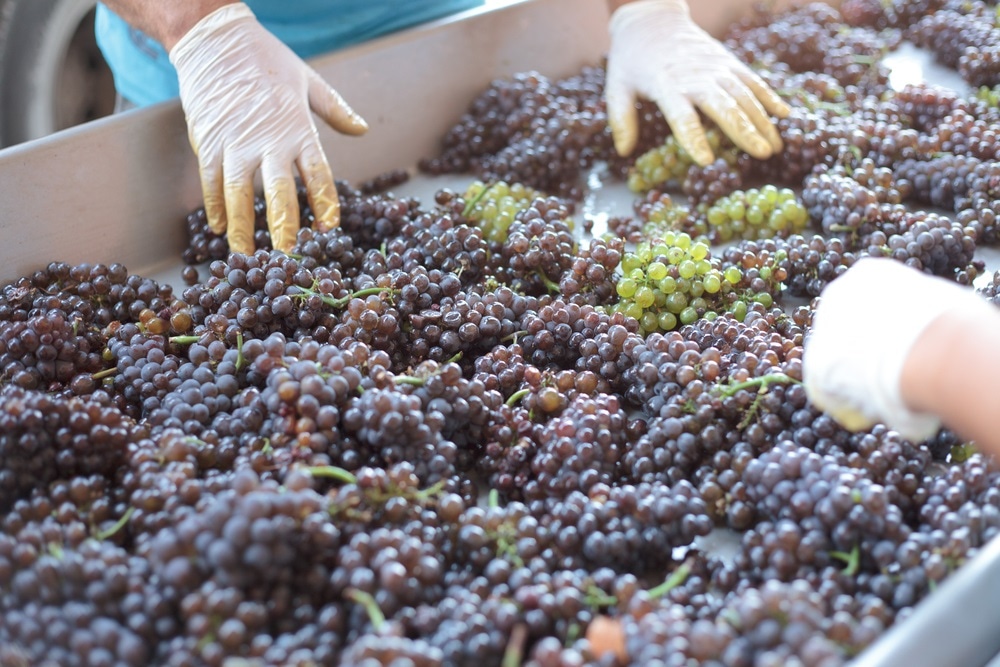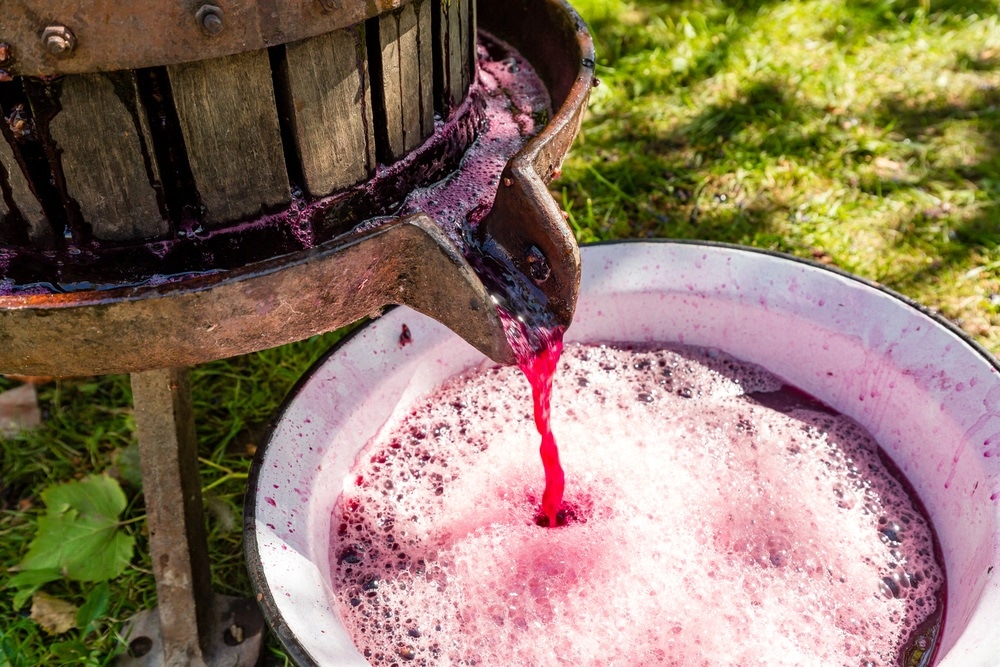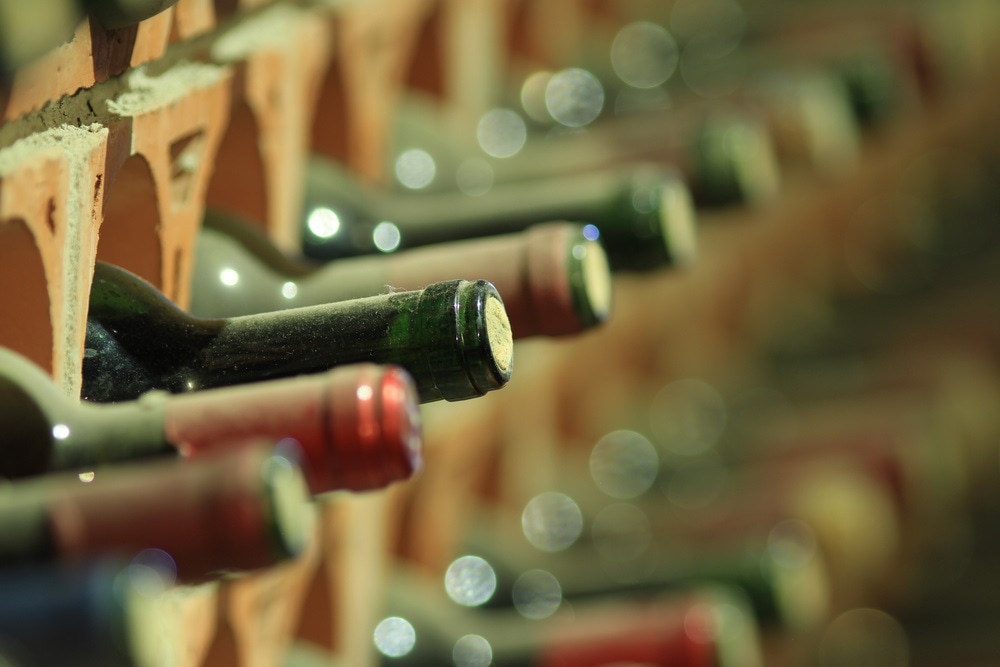Gordon Burns is the technical director and co-founder of ETS Laboratories, which runs specialist wine analysis labs based in the Napa Valley in California. The North American wine industry has quite a different story to tell than honey that was discussed in another interview when it comes to authenticity issues.
Can you introduce yourself and your business, and talk about the background of ETS Labs?
ETS Laboratories is a family-owned business that my wife and I opened 42 years ago in St. Helena. We still have our roots here in the middle of the Napa Valley in California, the heart of one of the premium wine-growing regions of the United States.
We are an independent laboratory, unaffiliated with other branches of government labs or supported by trade associations. Our income is entirely what our clients decide is worthwhile to them and they choose to come back to us again and again.
We have clients that have been with us for 42 years, since the very beginning. Today, our clients include quite a global contingent because we offer some analyses that are not available anywhere else in the world.
We do everything for wineries starting with the grapes in the vineyard, from harvest through to the fermentation process, and up until the wine has been in the bottle for as many as 50 years.
Over the years, we have watched the demands from our clients evolve a lot. In the early days, it began with simple inquiries about acidity, sugar and what was in the berries making wine.
Now, it has evolved to a point where we have quite a considerable staff to help address the needs of our clients here in our main St. Helena laboratory. On any given day, you will find more than 30 people working and doing the analysis plus another 20 that exist to help support that function.
Up and down the West Coast of the United States, we have a remote laboratories called satellite labs that range from Eastern Washington, the Willamette Valley of Oregon, where they grow a lot of burgundy style varieties, to the Sonoma Valley, and down South to the Central Coast in Paso Robles, a phenomenal wine-growing region with increasing demands.
In each of these locations, we have smaller laboratories that exist on our same quality system and using the same methodologies but having a shorter scope of work.
In St. Helena, we have almost every type of sophisticated analytical technology that can come to play in the analysis of wine. That ranges from things such as titrations for titratable acidity, pH and sulfur dioxide.
We have highly automated equipment or adapted clinical equipment that does routine analysis, such as the organic acids in wine and sugars through a whole range of other functions, including chromatographic techniques such as LC-MS/MS, GC-MS/MS and accurate mass.
Everything exists for its own purpose, so we are ready to serve clients' needs.
You have spoken before about winemaking being a combination of science and art. Can you speak about how your role ETS Laboratories plays into that process and how more scientific methods and technology have been welcomed in the industry?
One can make wine with all art and no science. One can make wine with all science and no art. However, the best wine involves a combination of those two things. We hope that we satisfy the science side of that equation by delivering the data that clients need to help support their artistic efforts on the winemaking side.
I like the word craft better. Winemaking is a craft, whether it is done on a very small scale or on an enormous scale. People are doing magic by taking those grapes from the vineyard and turning them into something that can endure and even improve in the bottle over a period of decades.

Image Credit: Natalia Davydenko/Shutterstock.com
You have also been a champion for newer techniques, like NMR, when compared to the more traditional and straightforward chemical analyses. What does NMR technology bring to your winemaking toolkit that you do not get from the other techniques?
We have to be careful in selecting new techniques. We try to investigate what benefit it brings to our clients. As we embrace new technologies, we are on what folks call the ‘bleeding edge,’ which means that we are the people who have to take the technology and adapt it to the winemaking field.
It has been interesting over the years to watch brilliant folks with new technologies coming to us and saying, "Well, I have something very special and I'm sure it will be useful in the winemaking field," only to be defeated once they understand the complexity of winemaking and of the wine itself.
Wine is an extraordinarily complex foodstuff with thousands of components that can be analyzed from any given wine using a combination of techniques.
Our adoption of NMR has been somewhat different in that we have partnered with Bruker, the world's largest producer of NMR, to take work they have done over the past decade in the field of winemaking and extended it to the United States.
Bruker has built a software platform on top of the NMR hardware technology that is called Wine Screener, and it uses the NMR spectrum that is obtained.
Then, a very sophisticated adaptation of chemometrics answers questions such as: What variety is the predominant variety in this bottle? What is the likely origin of this wine geographically? In some cases, what vintage is this wine?
This can only be done with a database of authentic samples that are known to be authentic as to those attributes I just talked about. Once again, what variety is it? Where did it come from? And when was it grown? This database does not yet exist for the United States.
Our side of the partnership with Bruker involves working diligently to obtain those authentic samples and the spectra that relate to them in that high level metadata so Bruker can then incorporate them into their chemometric models.
Once this collaborative effort is completed over a gradual period of some years, then we will be able to answer those same questions about wines that are grown here in the United States.
For your clients who are winemakers, what demands do they see from their consumers? Is this something that has changed in recent years, or is it something that is fairly consistent?
We hear consistently and increasingly from our clients that the consumers that they are working with are demanding to know more about the provenance of the wine in the bottle they are selling to them. Consumers are demanding to know more about proof of where it was grown and what the varietals are.
This is happening right across the food supply chain. For this reason, people are coming to us and saying, "Well, I need to establish just what techniques do you have in place that can help me with that?"
We have many techniques that we have applied over the years to help answer these questions. NMR is an additional technique that brings huge value to the table.
Why does NMR bring such value to addressing demands about the quality of wine purchases?
NMR in this application has the unique analytical ability to look at a very broad range of compounds that are within the wine simultaneously in one analytical run. NMR does not care whether the compound that it is looking at is an acid or a base, a phenolic compound or something else, an alcohol or a phenolic.
We can obtain a very broad spectrum of NMR responses that looks at the entire composition of the wine in one go.
This is fantastic because to do something similar using other analytical techniques, we might need to employ HPLC with various kinds of detection with multiple runs, coupled with gas chromatography, and various kinds of detection in multiple runs along with all of the basic chemistries.
With that one run, the NMR spectra get a very large selection of the major wine constituents. It has been established that it is adequate with proper chemometrics and a proper database underlying it to help predict the origin, the varietals, and even in some cases, the vintage.
This is not the be-all and end-all. As a first step, and in some cases the only step, this NMR prediction will allow us to find wines that might have some questions as to whether they meet the standard that they are asked to adhere to. We might use other analytical techniques mentioned earlier to help verify and further establish the conclusions.

Image Credit: aerogondo2/Shutterstock.com
Is the pressure to adhere to those standards coming entirely from consumers, or do regulatory bodies play into that as well? Are there increasing demands from a legal or legislative standpoint for the product to meet?
To date, in the United States, we do not have that regulatory pressure. That is something that will come down the road, and it will be very good to be in advance of such requirements by having the technology and the database in place.
When I say consumer pressure, the pressure is coming more so from producers themselves who believe it is their duty to establish these basic facts regarding the wines they are providing to consumers.
They say, “It is my duty to have this proof in place and by having it in place, I strengthened my brand. I strengthened my brand; I strengthen my validity in the eyes of the consumers.”
I believe the main factor driving this is the producers themselves wanting to establish the authenticity and the origin and being able to demonstrate that as underlying the value of their product.
How do trade associations play into that? Are there associations between producers or the players in the industry, and does that vary from region to region?
Here in the United States, there is one major trade association and two or three others that are also important that represent wineries and wine growers throughout the country. These associations also see it as part of their duty and mandate to strengthen the brand that is, for example, Wine California or Wine Oregon.
In that vein, they are exhibiting a very strong desire to incorporate this kind of technology that we have been discussing for those same reasons that I just discussed. To establish the authenticity, the provenance, and secure that chain of the authenticity right from the vineyard to the consumer.
The North American honey industry faces obstacles in trying to enforce standards with better technologies and testing. Do you think the wine industry is setting a better example?
Honey is not my field, but if I could predict having spoken to a number of people in that field, I think that situation will change. It simply has to change once trade associations recognize the importance of authenticity.
Once they recognize that securing the supply chain is not optional and is mandatory in this day and age, things will change. Being able to demonstrate an unbroken link right through to the consumer is not going to be optional, it is going to be something that they will be asked to establish.
Do consumers need to worry about the adulteration of wine? How common is that in practice?
Within the United States, there is very little adulteration that goes on. It does not make for a sustainable business to engage in those practices.
The producers that we deal with and have dealt with now for over 42 years are upstanding, honorable people and I truly do not believe that the issue of adulteration is something that consumers need to worry about.
Having said that, in the global trade of wine, when wines start being shipped from one country to another and go through multiple hands through broker and intermediaries, to the hands of people handling the shipment, there is always the possibility of something going awry, not because of intentional misdeeds but from honest errors and things that can happen out there in the real world.
Is there no adulteration in the wine industry worldwide? No, I could not say that with a straight face and certainly, it has happened and no doubt it will happen again. But whether or not this is widespread does not change the basic fact that the duty to establish that continuous chain and be able to prove the authenticity is not lessened.
ETS plays a role at various points throughout the winemaking process. When buying Californian wines in countries where there are longer supply chains, how can other applications of NMR provide solutions to re-verify that this particular vintage and variety is correct, and provide reassurance to customers?
Other applications of NMR beyond the Wine Screener application are very useful. The next one in that chain that is extremely important is the use of NMR to answer the question of whether wine A is the same as wine B.
Even today, we have had multiple instances of wine producers saying, "Look, there is this product in the marketplace that is claiming to be our product in a foreign country. We almost certainly know it is not the same product we shipped out of our winery. Can you establish that for us with objective analytical data in addition to what we know?" NMR is a perfect tool for that.
We have other tools that are in our repertoire that we could use to help do this. However, NMR has the ability to look at hundreds of constituents of the wine in one go, and then look at that spectrum comparative to a second wine and answer, with a very high assurance, whether this wine is the same wine as the other.
NMR is often thought of as a qualitative analytical tool. However, it has another fantastic feature unrelated to assessing wine authenticity, securing the supply chain, or comparing wine identities.
It also has the ability to perform quantitative analysis of compounds. This quantitation can be done on compounds for which an authentic reference standard is not available. No other technique that I know of can make that claim.
We have requests for some unique analytical measurement where we simply were not able to procure or synthesize the analytical standard but were able to build a quantitative analytical measurement using NMR for the compound to the delight of our winemaking clients.
I anticipate that NMR will increasingly be used in this application as a quantitative analytical instrument out in the laboratories.

Image Credit: Radu Cadar/Shutterstock.com
Both applications that you talked about benefit from not requiring a database to compare against. If you are comparing two wines at the beginning and end of a distribution chain, you just need those two samples. Could this make the scaling of the application easier?
That is right. Clients have come to us after visiting a vineyard overseas and buying thousands of gallons of product, but when a tanker then shows up at their winery for bottling or blending, out comes the wine and, in some cases, that wine does not reflect what they think they bought in the first place.
Once again, I will emphasize it does not mean that fraud needed to have been committed. Any number of things could have happened along that chain.
Now, people can take samples at the point of buying the wine and have one of those samples sent directly to ETS so we can obtain NMR spectra of that wine and save them away as a signature of that wine.
Then, additional samples can be taken as it is loaded into the tanker and then you could get as granular as you wish as it is offloaded from the ship because of the uncertainty of what may happen on the high seas and in multiple ports, then another sample as it is received at the winery.
Either they send us each of those samples for comparison along the chain, or we look at the front end and the back end of that process. When and if there were to be a mismatch, then they are able to drill back into that collection of samples and see where something might have gone astray.
This is an obvious application of a technique like this for not very much money, certainly relative to the typical value of a wine transaction. This is in play today and I see that as being one of the major applications of the technique.
Can you talk about that process, and some of the achievements and challenges of building up the database of U.S. wines for the Wine Screener as you have been involved with?
First, we need to have a good view of the wines that represent wine in commerce within the United States.
For that reason, we are working hand in hand with others who have access to that detailed information to give us the hit list of which varieties from which regions and how many of those we need to have in order to truly represent well the thing that is wine in commerce within the United States.
That is in place. The next step is to then obtain all those wines that are 100% authentic of the variety we are talking about from a known, well-characterized region. They need to be single year and not blended.
Some planning is required on the part of producers because wines are not always kept as single varietals. They are in the state that we need them for the analysis. We were doing pretty well with hundreds of samples into this database, but we need to be thousands of samples in it for it to be fully usable.
We have lost a year from the terrible virus issues that simply disrupt the normal operations of everything and the ability for wineries to practically go pull these samples.
We just experienced, on top of COVID, some horrendous wildfires this year. These wildfires came down, both sides of the Valley to within literally hundreds of yards of the town of St. Helena, where our main laboratory is located.
Many people lost their homes, and it has been devastating for the region as a whole. The collection of these samples and the database building has been on hold. We are now re-engaging in that process.
We hope that 2021 will be a smoother year than 2020 from the COVID perspective. We are also going to have to live with moving forward and we hope the wildfires will not be as widespread and devastating as they were in 2020.
The challenges, in short, are having access to the list of what we actually need to obtain for the database to be meaningful. The next one is the logistics of obtaining those in the form that we need as single varietals and the actual analysis of the wines and the generation of the chemometrics pose less of an issue.

Image Credit: stockatto/Shutterstock.com
Where do you see the future of the wine industry and ETS in the coming years, and are there any changes from the impacts of COVID or from climate and wildfires?
I see the wine industry continuing to grow globally. There have been global challenges that many in the wine industry have had to face. At the same time, wine consumption globally is remaining steady and even climbing in many market segments.
I see the future of the California wine industry to be especially bright. There is a lot of innovation occurring in the California industry. New varietals are being planted in locations that were not planted previously in response to issues of climate change.
Varietals that were not previously viable in regions up and down the West Coast of the United States have now become viable. Consumer trends favor premium wines which are a significant part of what we do. That is positive for the industry as a whole and for ETS.
What do you see for the future with the growing use of NMR technology in addressing wine authenticity?
We will continue to see innovations in analytical technology. I believe many of those will be on the chromatography side, leading to more rapid analysis and hopefully more rugged instrumentation.
NMR is going to have an important role to play in all of that. Reasons for this include the important use of the Bruker implementation of Wine Screener for variety, origin, and even in some cases, vintage.
It is going to become important in the wine industry increasingly for that question of “Is wine A the same as wine B?” which extends to securing the supply chain by saying, “How have we protected the authenticity of this wine right through the chain?”
I believe that the application of NMR as a quantitative tool is going to explode. We will see many more applications of the technique for that.
There are limitations to NMR. Does it replace the LC triple quad MS or GC triple quad MS or Accurate Mass, Mass Spec? No, it does not replace them. The way we use the instrumentation is a technique for part per million analysis on the lower end.
It is not a technique for part per trillion analysis, which we do a lot of for other reasons using other analytical techniques.
We must consider the right technique for the right job. However, in its role, NMR has filled a gap, and I think it is going to be solidly important for the future of analytical techniques in winemaking.
In this interview, Gordon Burns explains the power of NMR spectroscopy and how he uses it in his lab. If you think FoodScreener might be able to help you ensure and verify the authenticity of your food products, do reach out to Bruker's experts at bruker.com/foodscreener.
They will be very happy to talk with you and there are also plenty of resources available there if you just want to learn more about this technology. For more material about the FoodScreener, visit Bruker's website to learn more about it. You can reach out to Bruker's experts as well at bruker.com/foodscreener.
About Bruker BioSpin - NMR, EPR and Imaging
 Bruker BioSpin offers the world's most comprehensive range of NMR and EPR spectroscopy and preclinical research tools. Bruker BioSpin develops, manufactures and supplies technology to research establishments, commercial enterprises and multi-national corporations across countless industries and fields of expertise.
Bruker BioSpin offers the world's most comprehensive range of NMR and EPR spectroscopy and preclinical research tools. Bruker BioSpin develops, manufactures and supplies technology to research establishments, commercial enterprises and multi-national corporations across countless industries and fields of expertise.
Sponsored Content Policy: News-Medical.net publishes articles and related content that may be derived from sources where we have existing commercial relationships, provided such content adds value to the core editorial ethos of News-Medical.Net which is to educate and inform site visitors interested in medical research, science, medical devices and treatments.